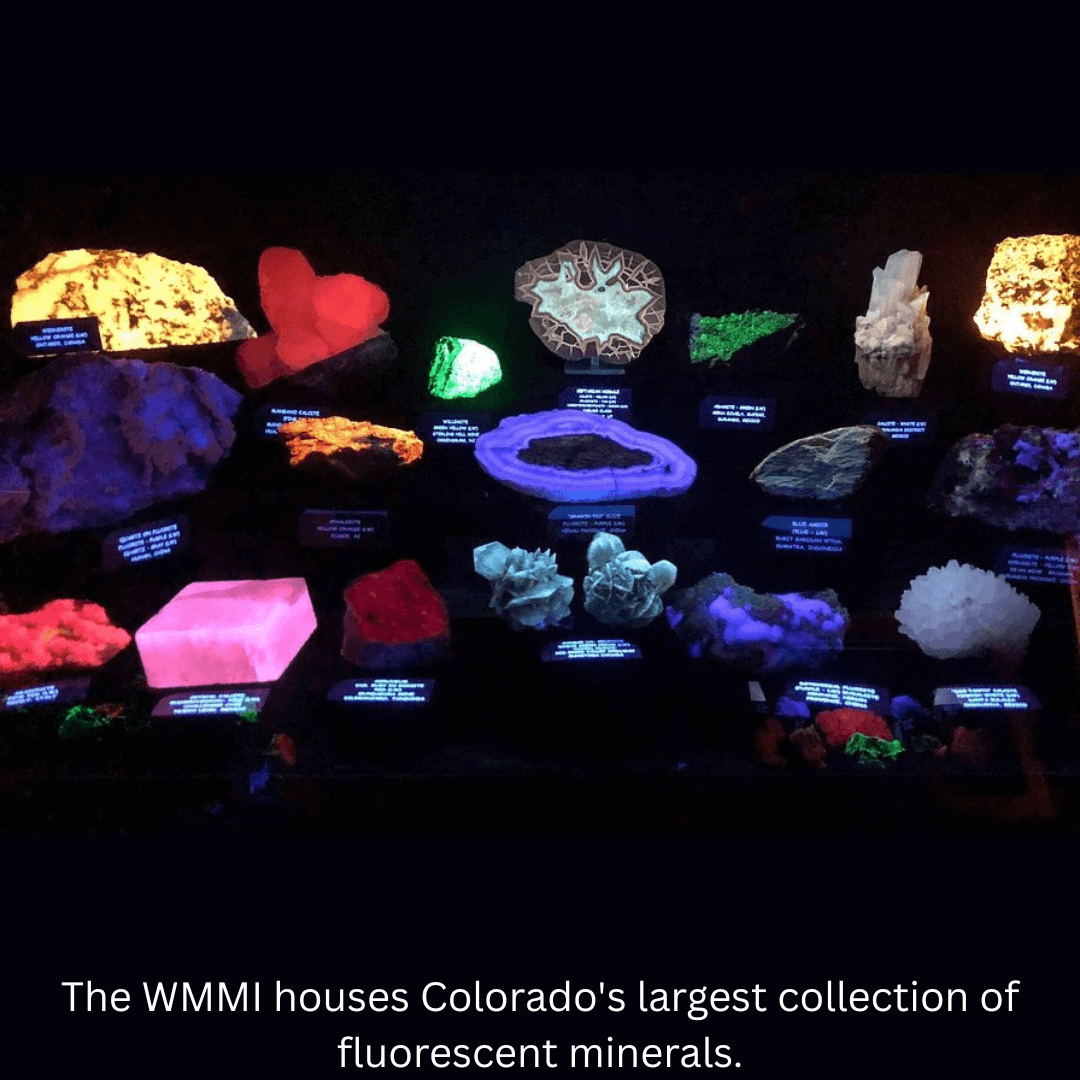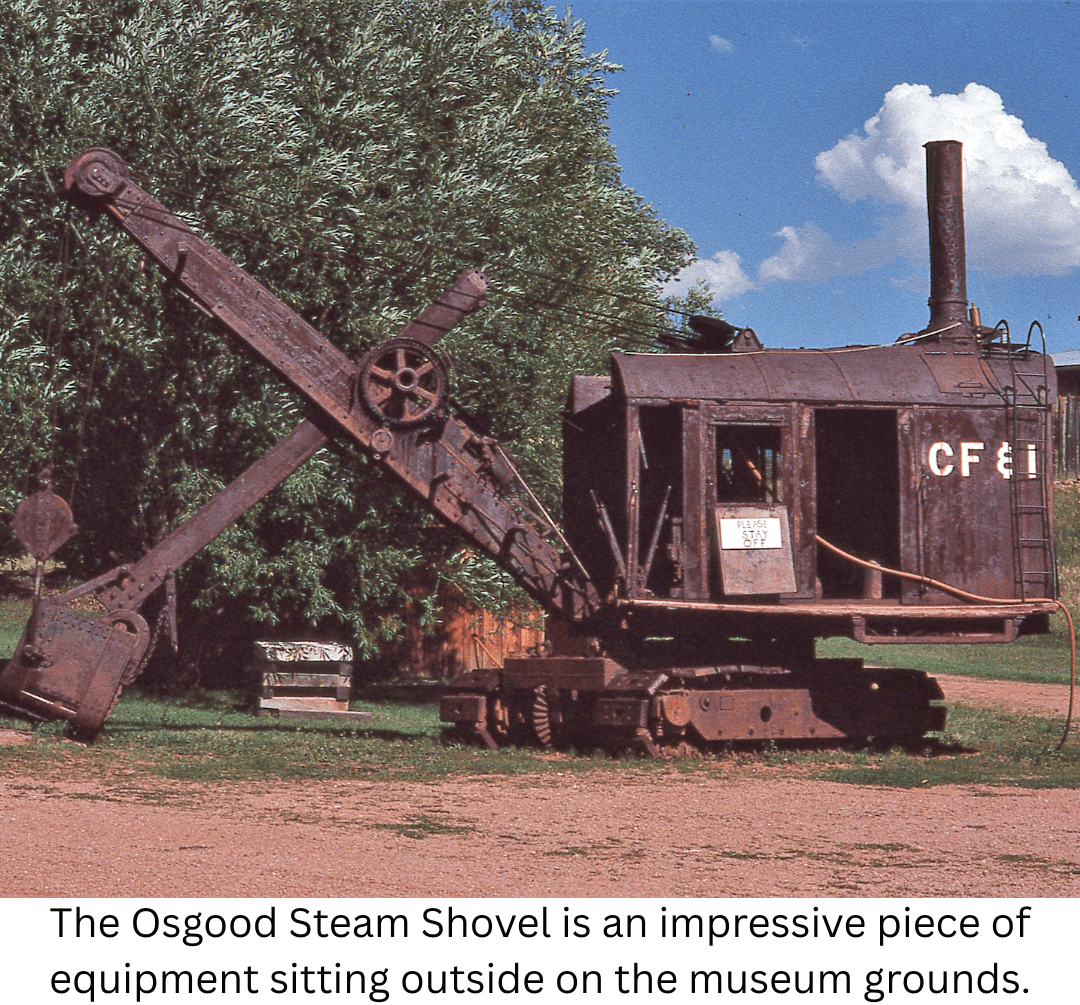The Western Museum of Mining & Industry (WMMI) is located in Colorado Springs. It is a convenient stop-off on Interstate 25, ideal for driving to or from Denver. The museum, founded in 1970, is dedicated to preserving the mining history and industrial technology of the western United States. The vision, as stated on their website, is “to inspire present and future generations to become informed and thoughtful environmental stewards through experiential and engaging learning.”
The museum’s collection started with artifacts from Frederick Farrar and his wife, Katherine Thatcher Farrar. Frederick M. Farrar (1912-1985) was an American banker who studied in 1933 at the Colorado School of Mines, and later business and law. Farrar began as chairman of the WMMI in 1971 and lived in Colorado Springs.
The museum is renowned for its antique equipment, both within its 12,200-square-foot exhibit hall and outside. Their campus covers twenty-seven beautiful acres. History comes alive with their Interactive exhibits and the knowledgeable docents who share the area’s rich mining past. We visited some time ago, but I can still remember vividly all those powerful machines.
Prominent Indoor Exhibits at WMMI
At the What’s Mined is Yours Mineral Display, visitors can learn about minerals and metals in products we use every day, which are directly or indirectly connected to mining.
The Walk-Through Mine Drift is a replica of a mine built with the assistance of engineers from the Colorado School of Mines. It helps the visitors experience the difficult work space of a miner, how cramped and loud it was to work in there.
 At the Interactive Mining in America Exhibit, visitors can click on various regions throughout the United States to learn about the importance of mining, including gold, diamonds, coal, shale, and more.
At the Interactive Mining in America Exhibit, visitors can click on various regions throughout the United States to learn about the importance of mining, including gold, diamonds, coal, shale, and more.
The museum houses Colorado's largest collection of Fluorescent Minerals. The magic of rocks glowing in the dark makes them everyone’s favorite rock attraction, especially for the young visitors.
The Chilean Miners Rescue Pod Display pays tribute to a relatively recent mine accident. On August 5, 2010, a cave-in occurred at the San José copper mine, twenty-eight miles north of the regional capital of Copiapó, in northern Chile. Thirty-three men, known as “Los 33,” were trapped 2,300 feet underground for a record sixty-nine days. The whole world watched the rescue drama unfold daily. The miners survived in a room called the “refuge”.
Three rescue capsules dubbed the Fénix (the Phoenix), 21 inches in diameter, were constructed by a Chilean shipping company with NASA’s help. The capsule that eventually rescued the trapped miners was the Fénix 2. It had an oxygen supply, lighting, video, and voice communications, as well as an escape hatch. Miners were brought to the surface one at a time inside this capsule. The original Fénix 2 is placed in the Plaza de la Constitución, in front of Chile’s presidential palace in Santiago. The capsule at the WMMI is an exact replica of the rescue pod; visitors can touch it and even get inside the cramped space.
The Steam engines and other working machines on exhibit demonstrate the power and innovation of the late 19th century. The 1895 Corliss Steam Engine was used to lower miners into the shafts at speeds of several hundred feet per minute. A Corliss steam engine was fitted with rotary valves and variable valve timing. It was invented and named after US engineer George Henry Corliss of Providence, Rhode Island, who patented the steam engine in 1849. At this interactive exhibit, visitors can learn how miners’ lives depended on this machine and the perils that lay hidden within a mine.
Also on display are a 1906 Skinner automatic steam engine (a single cylinder counter-flow engine), a Downie Steam Pump (pumps found today at refineries worldwide), an Orr & Sembower portable steam engine (America’s leading line of steam engines since 1885) and an Edison Dynamo – a device that makes direct current electric power using electromagnetism.
Prominent Outdoor Exhibits at WMMI
The Osgood Steam Shovel is an impressive piece of equipment sitting outside on the museum grounds. It was manufactured by the Osgood Company, originally known as the Marion Steam Shovel & Dredge Company, founded in 1910 in Marion, Ohio. A similar type of shovel was used to build the Panama Canal. During the summer, on “Super Saturdays,” visitors can see this machine in action.
Just up the hill sits the operating gold ore Yellow Jacket Stamp Mill. This is a carefully reproduced 10-stamp mill by the museum’s staff using 19th-century construction methods. A jaw crusher and amalgamating tables are on display, typical of the Western mills from 1890 to 1920.
At the top of the hill stands the Mining Headframe, an iconic symbol for most mines. At the Blacksmith Shop, live demonstrations provide a close-up look at the art of forging metals and making tools.
Visitors can also tour separately the Reynolds Ranch House, a 100-year-old Queen Anne-style farmhouse, located by the museum’s property entrance. Try your hand as a prospector and pan for gold at their seeded gold panning stations. A video helps guide your experience.
Plan Your Visit
The WMMI is located at 225 North Gate Blvd, in Colorado Springs, just off I-25 at exit 156. The museum is open year-round, from Monday through Saturday, 9 am to 4 pm. Free guided tours are included with your admission and are offered at 10:00 a.m. and 1:00 p.m. For museum tickets and current info, visit their website at https://wmmi.org.
If you are lucky and plan ahead, you may catch one of their lectures. A wonderful gift shop with crafts, jewelry, minerals, books, and toys is open during regular museum hours. The museum also encourages school visits and STEAM camps.
 Helen Serras-Herman, a 2003 National Lapidary Hall of Fame inductee, is an acclaimed gem sculptor and FGA gemologist with over forty years of experience in unique gem sculpture and jewelry art. See her work at www.gemartcenter.com and her business Facebook page at Gem Art Center/Helen Serras-Herman. All Photos © Helen Serras-Herman
Helen Serras-Herman, a 2003 National Lapidary Hall of Fame inductee, is an acclaimed gem sculptor and FGA gemologist with over forty years of experience in unique gem sculpture and jewelry art. See her work at www.gemartcenter.com and her business Facebook page at Gem Art Center/Helen Serras-Herman. All Photos © Helen Serras-Herman





